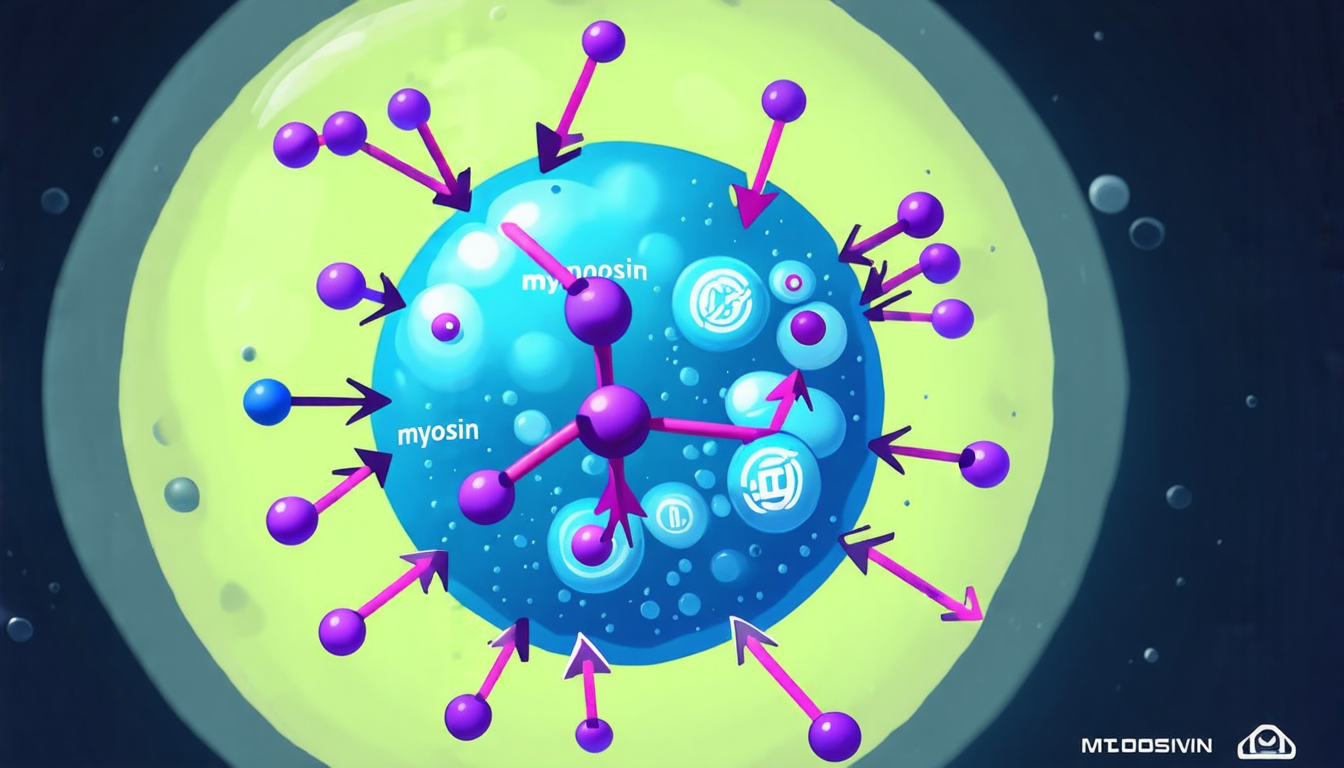Wednesday 26 March 2025
In a breakthrough in our understanding of cell migration, researchers have developed a new mathematical model that simulates the complex interactions between different isoforms of non-muscle myosin II. This protein plays a crucial role in cell motility, and its various forms can exhibit distinct behaviors.
The team used active gel theory to describe the dynamics of these proteins, which allowed them to incorporate the effects of excluded volume, a phenomenon where the space available for molecules to move is reduced due to their size. By incorporating this concept into their model, they were able to accurately predict the behavior of different cell types and explain previously observed experimental results.
One of the key findings of the study was that the relative diffusion rates of the two myosin isoforms can influence the directionality of cell migration. When one isoform is more diffusive than the other, the cell tends to migrate in a specific direction, while if both isoforms have similar diffusion rates, the cell’s movement becomes more random.
The researchers also explored the role of myosin isoforms in establishing tension and elasticity during cell morphodynamics. They found that the distinct properties of each isoform can lead to different levels of tension and elasticity, which can affect the overall behavior of the cell.
This study has significant implications for our understanding of cell migration and its role in various biological processes. By better understanding how myosin isoforms interact with each other and their environment, researchers may be able to develop new therapies for diseases characterized by aberrant cell migration, such as cancer metastasis.
The team’s mathematical model provides a powerful tool for studying the complex interactions between myosin isoforms and their effects on cell behavior. By combining theoretical predictions with experimental validation, scientists can gain a deeper understanding of the intricate mechanisms underlying cell migration and develop more effective treatments for related diseases.
In addition to its potential applications in medicine, this research also sheds light on the fundamental biology of cell migration. The findings highlight the importance of considering the interactions between different proteins and their environment when studying cellular behavior.
The study’s authors hope that their work will inspire further research into the complex interplay between myosin isoforms and their role in cell migration. By continuing to explore this area, scientists may uncover new insights into the intricate mechanisms underlying biological processes and develop innovative treatments for a wide range of diseases.
Cite this article: “Unlocking the Secrets of Cell Migration: A Breakthrough in Understanding Myosin Isoforms”, The Science Archive, 2025.
Cell Migration, Myosin Ii, Non-Muscle Myosin, Active Gel Theory, Excluded Volume, Cell Motility, Cancer Metastasis, Mathematical Modeling, Biomechanics, Protein Interactions







